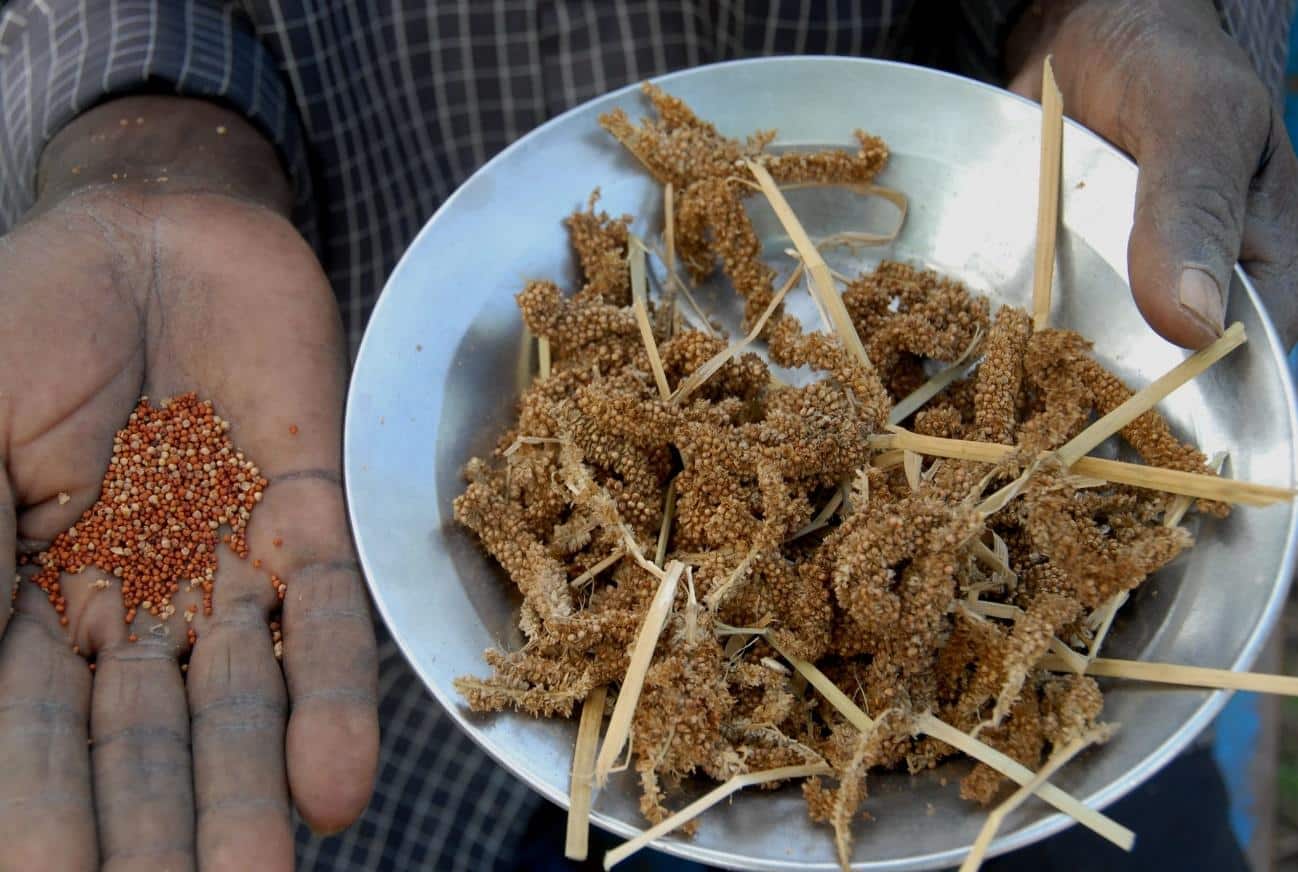The United Nations has declared 2023 “the International Year of Millets.” But this declaration alone won’t get nutritious and resilient millets onto smallholder farms directly. The UN says it will need help, and several of our grant applicants propose to do just that.
The UN Food and Agriculture Organization (FAO) is now promoting a short but sleek video on YouTube celebrating a category of crops that are widely cultivated but generally absent from the dinner tables of the West. In the new clip, the narrator speaks from the perspective of millets and gives a long list of reasons why food security advocates are keen to increase the world’s cultivation and consumption of these ancient yet neglected crops.
The allure of millets
“I grow where others cannot; I thrive in harsh and dry conditions, providing food when other harvests fail,” the imaginary-speaking millet tells us in the video. “Rooted in ancient cultures and traditions, I am a powerful source of innovation.” India in particular is hoping to lure innovators to the potential of these drought-resistant crops. But what will this International Year of Millets actually entail, and how do smallholder millet farmers in India and elsewhere stand to benefit?
“There are step changes in genetic gains, the crop improvement that could be made with additional funding”
The UN General Assembly formally designated 2023 as the millet year back in 2021. Then last December, FAO hosted a launch event to kick off the campaign. At that gathering, officials sang the praises of millets, which constitute a wide variety of seed-bearing grasses. Millets have been feeding people and livestock alike for thousands of years. They can be transformed into porridge, delicious snacks like traditional Indian roti flatbread, and even alcoholic beverages. Though less well-known in the West, they’re considered critical staple crops for millions in South Asia and sub-Saharan Africa. “Millets are ancestral crops with high nutritional value,” said FAO Director-General Qu Dongyu at the Rome celebration, pointing to evidence of millet cultivation in northern China dating back 8,000 years. “We can grow them on arid land with minimal input and be resilient to shocks and stress brought about by climate change,” he added.
Qu, a former plant breeder, said his agency’s main plan is to promote millets as a means of empowering smallholder farmers. He said the purpose of this year’s campaign is to “raise awareness and direct policy attention to” these crops and to promote higher levels of millet consumption, mainly by selling these crops on their health benefits. Qu said his agency strongly believes that millet cultivation is becoming more tenable—and ideal—in parts of the world getting drier with climate change. Qu has set for his agency an explicit goal of harnessing millets as a means of expanding business opportunities and incomes for farms in the face of global warming, in particular, developing nation smallholder farms.
Neglected by research funding
Speakers at the FAO launch event remarked on how millets are gluten-free, one key selling point promoters are busy emphasizing given the current gluten-free craze. Others noted how they’re high in iron content and fiber. But Jacqueline Hughes, the current head of the International Crops Research Institute for the Semi-Arid Tropics (ICRISAT), lamented how research into improving millets is often underfunded. Millets don’t attract anywhere near the amount of funding dollars flowing to other staple crops, and she said that’s a major problem. “There are step changes in genetic gains, the crop improvement that could be made with additional funding,” said Hughes. She noted that although these crops are ideal for dry lands, millet yields can be significantly boosted by adding water or improving soil conditions. Innovation will be essential as more must be done to entice consumers to millets, she added.
There is as yet no word on whether FAO will hold any follow-up millet-themed meetings or events, or what concrete measures will be immediately taken to find ways to direct more research dollars to millets, boost millet production, or raise consumption. The agency is now distributing informational packages and promotional materials, and promises to lay out the red carpet for any reporter interested in producing stories on millets. In other words, the main plan seems to be simply getting the word out first and then taking things from there.
Grow Further is currently reviewing a number of proposals to improve millet production, including one on pearl millet in Zimbabwe. We’re inspired by recent successful research like an in-depth investigation into the benefits of intercropping millets with pulses, and work to improve small millet genetics as a way to raise their appeal to farmers and consumers alike.
— Grow Further
Photo credit: Finger millet, considered to be an underutilized food species. Bioversity International.




